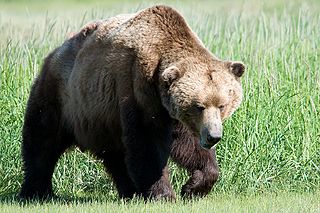Male bears are seemingly always on the prowl, roaming much greater distances than females, particularly for mating. For bear evolution, studying the paternally inherited Y chromosome is therefore a rich source to trace both the geographic dispersal and genetic differences between bear species.
This new study is particularly important, because a large part of our current knowledge about range-wide population structuring in mammals relies on data from maternally inherited mitochondrial DNA (mtDNA). More extensive male than female movement in bears and many other mammals implies that males carry genetic material over greater geographic distances than females. Therefore, the pronounced population structuring that has been reported for female-inherited mtDNA genes in brown bears might not be representative of the species as a whole.
By mining the genome of a recently sequenced polar bear, researchers from Axel Janke´s group at the Biodiversity and Climate Research Centre in Frankfurt, Germany, developed Y chromosome-specific markers, and analyzed several regions of the Y chromosome from a broad geographic sample of 130 brown and polar bears. They also included a continuous 390,000 base pair long stretch of genomic Y chromosomal region available in brown, polar and black bear genomes to gain a better understanding of the paternal signature of bear evolution.
They found evidence of extensive male gene flow that has led to the distribution of some brown bear Y chromosomes across incredibly large geographic distances, with two brown bears as far away as Norway and the Alaskan ABC islands carrying very similar Y chromosomes. This implies that one male brown bear lineage has spread across most of the brown bear’s distribution range. “This pattern in brown bears covers even larger geographic areas than analogous findings from humans, where the Y-chromosomal lineage of Genghis Khan, founder of the Mongol Empire, was spread across much of Asia,” said Tobias Bidon and Frank Hailer, lead authors of the study.
Because their data consistently showed that black, brown and polar bears carry highly distinct Y chromosome lineages, the researchers also estimated the timing of the split between the male lineages of brown and polar bears. The obtained time estimate for the speciation event of brown and polar bears is ca. 0.4 to 1.1 million years ago. This is significantly older than previous estimates based on mtDNA, confirming recent observations from autosomal markers that brown and polar bears from a genetic point of view represent highly distinct species. The study also shows that dispersing males connect the enigmatic brown bear population of the Alaskan ABC-islands to the North American mainland, and that the resulting movement of genes is substantial enough to maintain high genetic variability within this island population.
The study demonstrates that the Y chromosome represents an understudied part of the mammalian genome, providing crucial information to our understanding of the geographic structuring and evolutionary history of species.



Wow: very interesting article! I had heard about tracing lineages through mtDNA, and had thought that it was the most common method in use to track relationships. This blog really added to my understanding of different ways that ancestral lineages can be traced. I would imagine that with most species of bears, both sexes are becoming more migratory due to habitat loss and destruction, which would possibly contribute to the results of these studies. Is the Y-chromosome stable or do mutations occur? And would that not make tracking paternity easier?
Thanks for an interesting read!